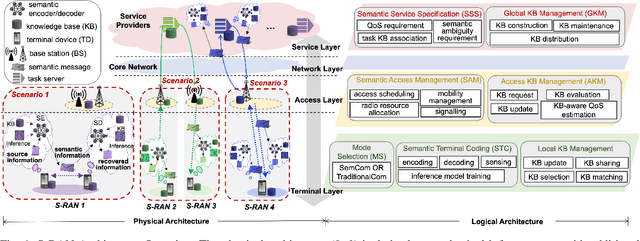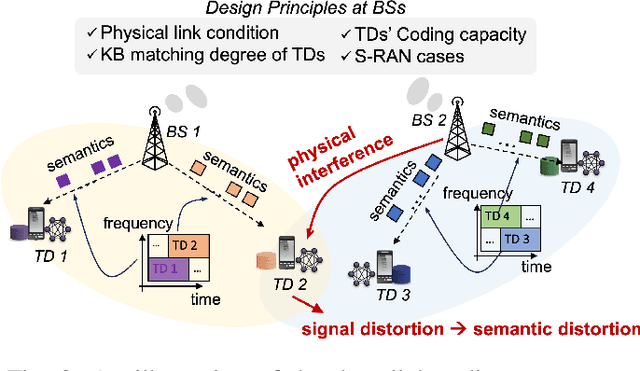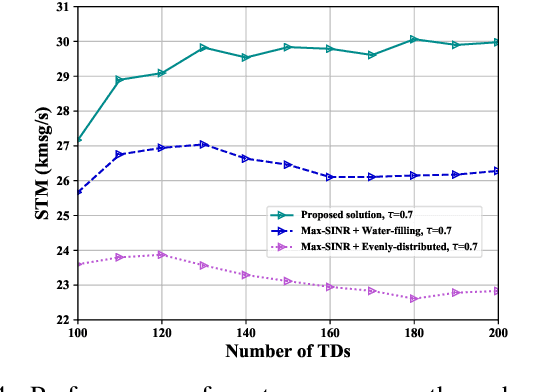S-RAN: Semantic-Aware Radio Access Networks
Paper and Code
Jul 15, 2024



Semantic communication (SemCom) has been a transformative paradigm, emphasizing the precise exchange of meaningful information over traditional bit-level transmissions. However, existing SemCom research, primarily centered on simplified scenarios like single-pair transmissions with direct wireless links, faces significant challenges when applied to real-world radio access networks (RANs). This article introduces a Semantic-aware Radio Access Network (S-RAN), offering a holistic systematic view of SemCom beyond single-pair transmissions. We begin by outlining the S-RAN architecture, introducing new physical components and logical functions along with key design challenges. We then present transceiver design for end-to-end transmission to overcome conventional SemCom transceiver limitations, including static channel conditions, oversimplified background knowledge models, and hardware constraints. Later, we delve into the discussion on radio resource management for multiple users, covering semantic channel modeling, performance metrics, resource management algorithms, and a case study, to elaborate distinctions from resource management for legacy RANs. Finally, we highlight open research challenges and potential solutions. The objective of this article is to serve as a basis for advancing SemCom research into practical wireless systems.
 Add to Chrome
Add to Chrome Add to Firefox
Add to Firefox Add to Edge
Add to Edge